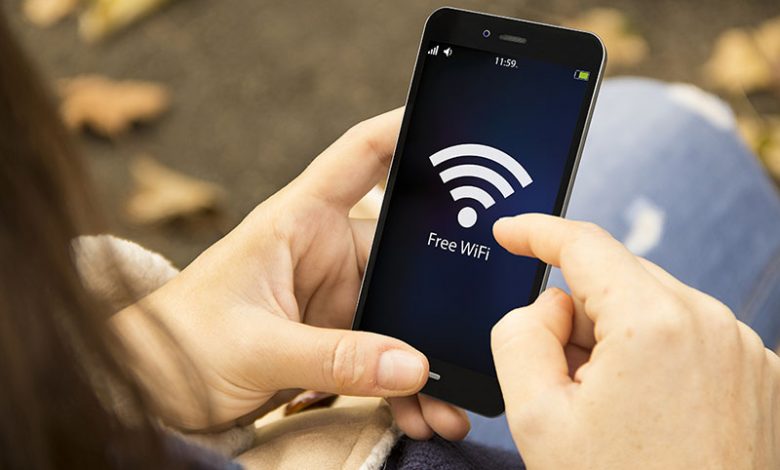
This refers to general techniques that can resolve the most common issues regarding your Android phone showing no internet even when connected to WiFi. These simple routines need no technical expertise but can solve most standard wireless connectivity issues. Follow these steps:
- Restart Your Phone. This method is effective for minor device glitches. Switch off your phone and turn it back on after a few minutes. It allows the device to refresh its internal systems, possibly fixing any temporary issues.
- Turn the Wifi Off and On. Turning your WiFi off and back on could reestablish the connection. Open your phone's Settings, go to the Network & Internet section, and turn off the WiFi. Wait a few seconds before turning it back on.
- Forget and Reconnect to the WiFi. This step involves disconnecting from your WiFi network and then reconnecting again. This can help fix any glitches. Open Settings, go to Connections and click on WiFi. Locate your WiFi network, tap the gear icon beside it, and select "Forget." This action will disconnect your device from the network. You can then connect again to see if you regain internet access.
- Change IP and DNS Settings. IP addresses and DNS servers can create network issues if configured incorrectly. You can modify these settings for improvement.
- Reset Network Settings. Resetting network settings can often resolve different connection problems. However, by doing this, all your stored network passwords are lost. To reset network settings on your Android phone, open Settings, scroll down to System, and tap Advanced. Then tap on either "Reset" or "Reset Options." Select "Reset WiFi, mobile, and Bluetooth" or "Reset network settings." Confirm this action for the device to commence a restart. For iPhone users, open Settings, tap on General, then Reset, and finally, select "Reset Network Settings."
- Verify Internet Connection. Verifying your internet connection is a fundamental step in troubleshooting. This can help you differentiate whether the issue is with your Android phone or internet service.
- Check the Network on Another Device. Try using the same WIFI network on another device. If the issue persists on the other device as well, it might be due to the expiry of your internet plan or the exhaustion of your monthly quota. If the WIFI works fine on another gadget, the problem is probably with your Android phone.
Table of Contents
Run a Speed Test
If the Internet doesn't work across multiple devices, there's likely a problem with your Internet Service Provider (ISP). Check for any reported outages from your ISP, or contact them directly to understand and fix any issues. Also, inspect the physical aspects of your internet connection, such as the internet cables, and ask neighbors who share the same service if they are experiencing similar issues.
Another helpful task is to test if you can access different websites. There could be instances where specific sites might not open due to network controls or restrictions. For instance, torrent websites are often blocked on work or school networks. Running a speed or connectivity test on multiple platforms can help you identify if the issue is website specific.
Lastly, execute a speed test on your WIFI network through another device to ensure the router is connected to the internet. Should you discover that other devices cannot connect to the internet either, the problem might be with your ISP's service, a physically damaged broadband cable, or the exhaustion of your data plan. Confirm this information by contacting your ISP or checking with your neighbors with the same connection.
Restart the WiFi Router
A simple restart can sometimes resolve Wifi Router issues. It's a straightforward process that may help to eradicate traditional router troubles by establishing a fresh connection to your Internet Service Provider (ISP) and fixing any temporary settings or glitches. Below are the necessary steps to carry out a router restart:
- Disconnect the Phone From the WiFi. Before you restart the router, disconnect your Android device from the WiFi. This can be done by going to your phone's settings, then navigating to the connections/WiFi section and hitting the disconnect or turn off button.
- Turn Off and Unplug the Router. The next step is to turn off the router. Achieve this by locating the power cord on the back of the router and unplugging it from the wall outlet or surge protector. Ensure all the router's lights are out and leave it off for about 30 seconds to allow the router to shut off completely.
- Restart Router and Reconnect Phone. After waiting 30 seconds, plug the router back into the power outlet or surge protector and wait for it to boot up. This may potentially take a few minutes. Once you notice that the router has entirely powered up and the lights have returned, try reconnecting your Android device to the WiFi. At this juncture, check to see if the internet connection is restored.
If the connection issues persist, you might need to consider contacting your Internet Service Provider or the host of your WiFi network for further help.
Location Issues and IT Administrator Blocks
Location issues such as signal strength and IT administrator blocks can sometimes account for your Android phone being connected to WiFi but not having internet access. Here are some ways to address this problem:
- Check WiFi Signal Strength. Poor WiFi signal strength might be the source of the problem. Examine your WiFi signal strength as a weak or inconsistent signal might prevent your device from accessing the internet even though it's connected to the WiFi.
- Get Closer to WiFi Router or Connect to Actual Router. One way to resolve this issue could be to get closer to the router. This will eliminate any potential interference or physical barriers weakening the signal. Moreover, ensure you are connected to the correct router, especially if numerous WiFi networks are nearby.
- Unblock the Phone on Router Website or App. Sometimes, your device may be blocked by the router's settings, preventing you from accessing the internet. This could be due to MAC address filtering, where specific devices are allowed or denied access. Investigate whether your router's settings block your Android device from internet access. Consult your router's manual and go to the appropriate settings page in the router's admin portal. Alternatively, you could check for this in the router's app. The router admin page varies depending on the manufacturer and model. Thus, input the correct IP address, username, and password written at the back of the router device to access it. In some routers, like the D-Link router, you can check if your device is blocked by navigating to the "Advanced" tab and selecting the "Traffic Control" option. For other routers, look for options like the MAC Address Filtering menu. If your device is listed among blocked devices, restore internet access by clicking Remove or Allow.
If you are still facing issues, consider the possibility of a problem with your Internet connection. It could be due to poor weather conditions, broken internet cables, or an error from your Internet Service Provider (ISP).




